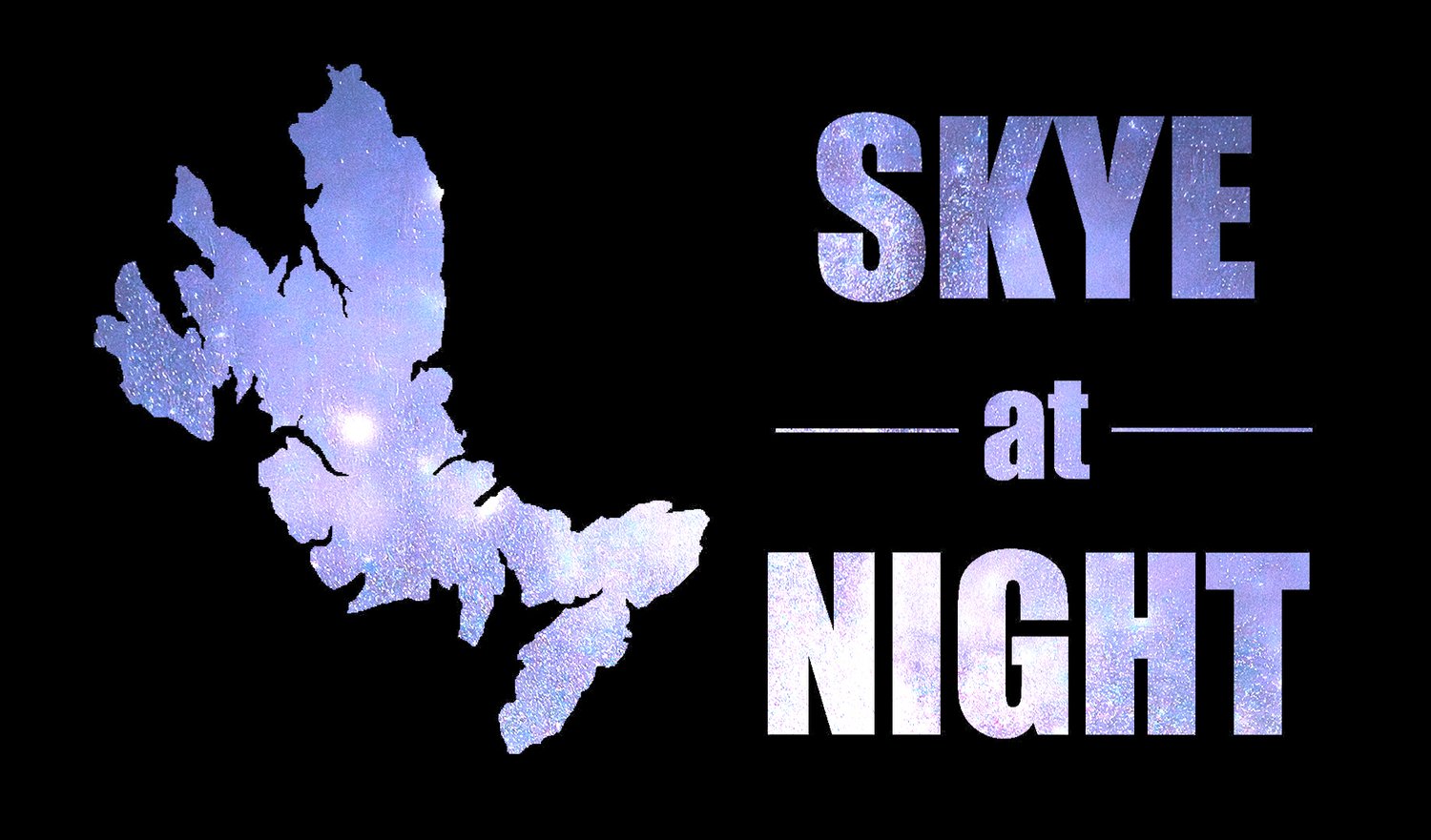The Distillers
Doc doing the rounds during the Torabhaig night shift.
The night shift is just getting started at the Torabhaig distillery.
During the winter, the distillery runs 24x7 with three shifts of distillers keeping production going non-stop. On this wild and stormy night in January, Doc and Niall were on duty among the beautiful copper stills and traditional wooden washbacks.
The Torabhaig distillery (seen in the below picture in daylight) sits in a wonderfully restored farm steading right by the sea, overlooking the ruins of Knock Castle. Opened in 2017, their first bottling was an immediate success, and demand has been soaring ever since.
Torabhaig distillery is in a restored farm setting overlooking a ruined castle.
The distillery’s pure fresh water supply is from a burn just up the hill, filtered through the heather and peat. The draff (the spent grain left in the mash-tun) is used by the farm next door to feed their cattle. The stone that the steading is made from comes from the old castle itself.
As the wind howled through the ventilated roof, Doc and Niall keep a close watch on temperatures, mixtures and flows. A lovely touch is that each distiller also gets to create their own “expression” - a special edition of their own creation, that is bottled and sold alongside the signature whiskies.
Doc checks the final output of the distilling process as Niall looks on.
Distilleries are usually extremely photogenic places, but it can be very tricky to get compelling images. Firstly, there are a number of safety restrictions to bear in mind including the risk of fire when using flashes near to highly volatile spirit vapours, and extremely hot metal surfaces waiting to burn you.
This meant I had to follow Niall and Doc’s guidance very closely as they showed me around. I wanted to get the feeling for the place, the tradition, and the mixture of textures and materials used.
Niall checks the valves below the floor next to the wooden washbacks.
Due to the trickiness of many of the spots I was photographing in, I used my Leica Q3 for all these shots (except the drone pic obviously). My go-to setup for a lot of my people pictures in this series is the Q3 with a single remote flash in a small octabox to soften the light nicely.
I usually have the octabox on a lightweight stand which makes everything easy to carry and position, and has the benefit of being hand-holdable if I cant get the stand placed anywhere suitable. The flash in the octabox is triggered by an old-style Pocket Wizard radio trigger.
This compact setup makes for fast, efficient and very high quality photography. The Leica Q3 sensor and lens combination is astonishingly good, with huge resolution, crispness and natural contrast.
My typical process is to set the camera’s exposure manually to be a little underexposed for the ambient lighting, and then adding in light onto the subject using the flash.
Niall checks the percentage of alcohol content in the distilled spirit which is used to calculate the tax owed to the Treasury.
I’ll usually try to use as wide an aperture as possible. This throws the foreground and background out of focus, keeping the subject crisp and sharp. The effect is to add depth and context to the image, without detracting from the subject I want the eye to look at.
So I start with getting the aperture I want, and then adjust the shutter speed and ISO accordingly. Assuming the subject isn’t moving, I can drop the shutter down to 1/30th of a second (the Leica Q3 has inbuilt image stabilisation), and then the last thing to adjust on the camera is the ISO which I simply keep as low as possible to get the exposure I want.
Sometimes I’ll be photographing a moving subject, so I need to decide how to portray that movement in the final image. Do I want it frozen and sharp, or do I want the motion visible to indicate speed or action? That will dictate the shutter speed I need, and I’ll likely have to adjust the aperture and ISO accordingly.
The last thing to do is set the amount of light I want the flash to produce. I still like using manual flashes rather than adjustable LED panels. I can get a lot more light per £ from a flash gun, and I can combine 3 of them into a single light source or spread them around with one of them triggering the others. They are also pretty simple, and my Pocket Wizard radio triggers are extremely reliable, so I stick with what I know works, and is highly portable and reliable.
My evening in the distillery was both educational and enjoyable. Doc and Niall were great hosts, showing me how everything worked and posing patiently for these pictures. If you get a chance, I highly recommend the distillery tours that Torabhaig runs, with a stop in their cafe and shop afterwards. You might even find a copy of Skye At Night there to buy.





